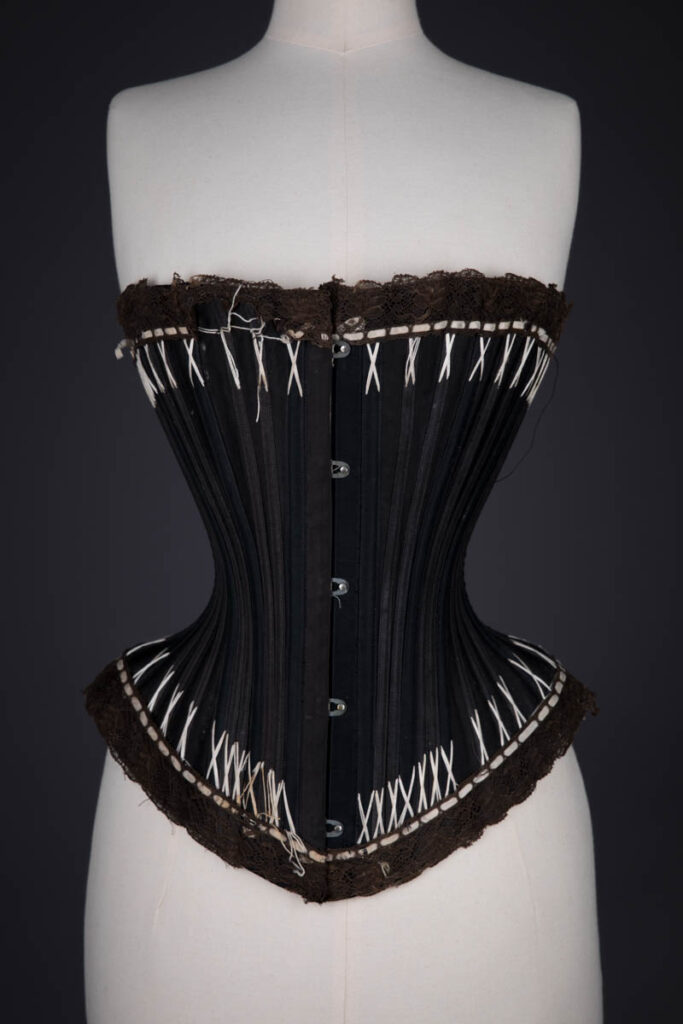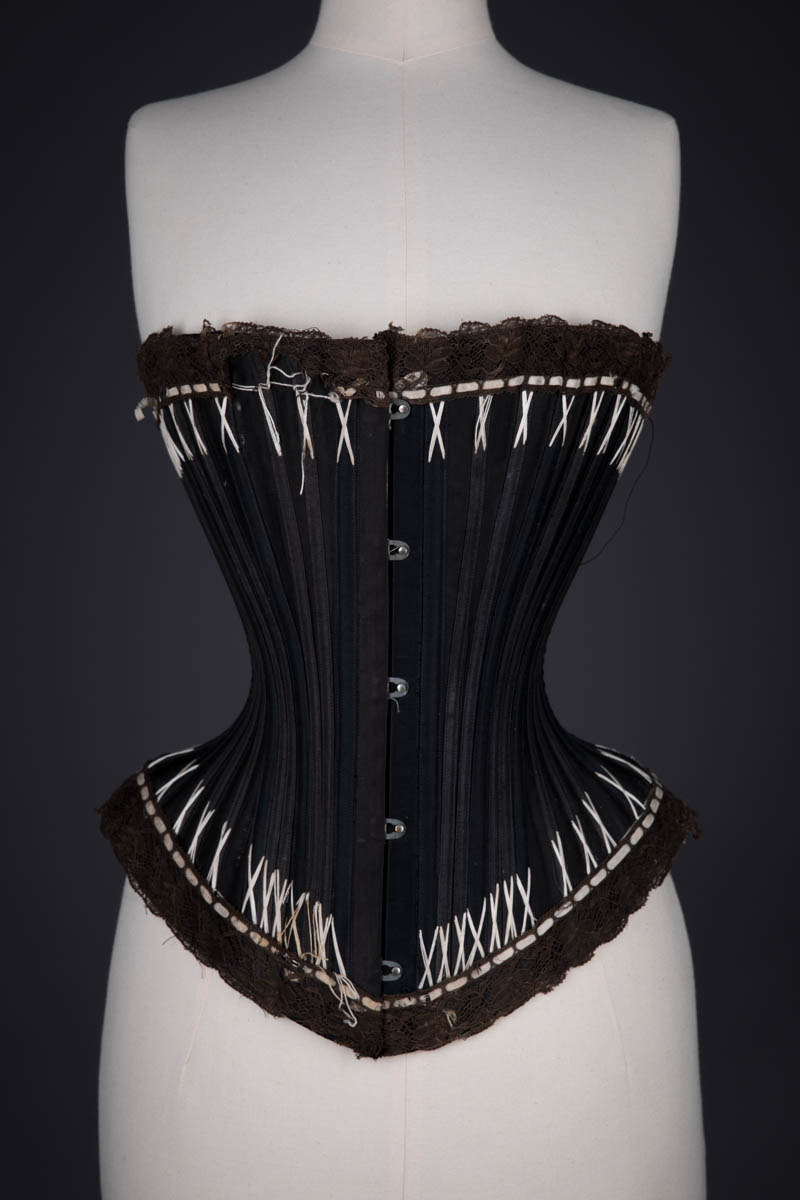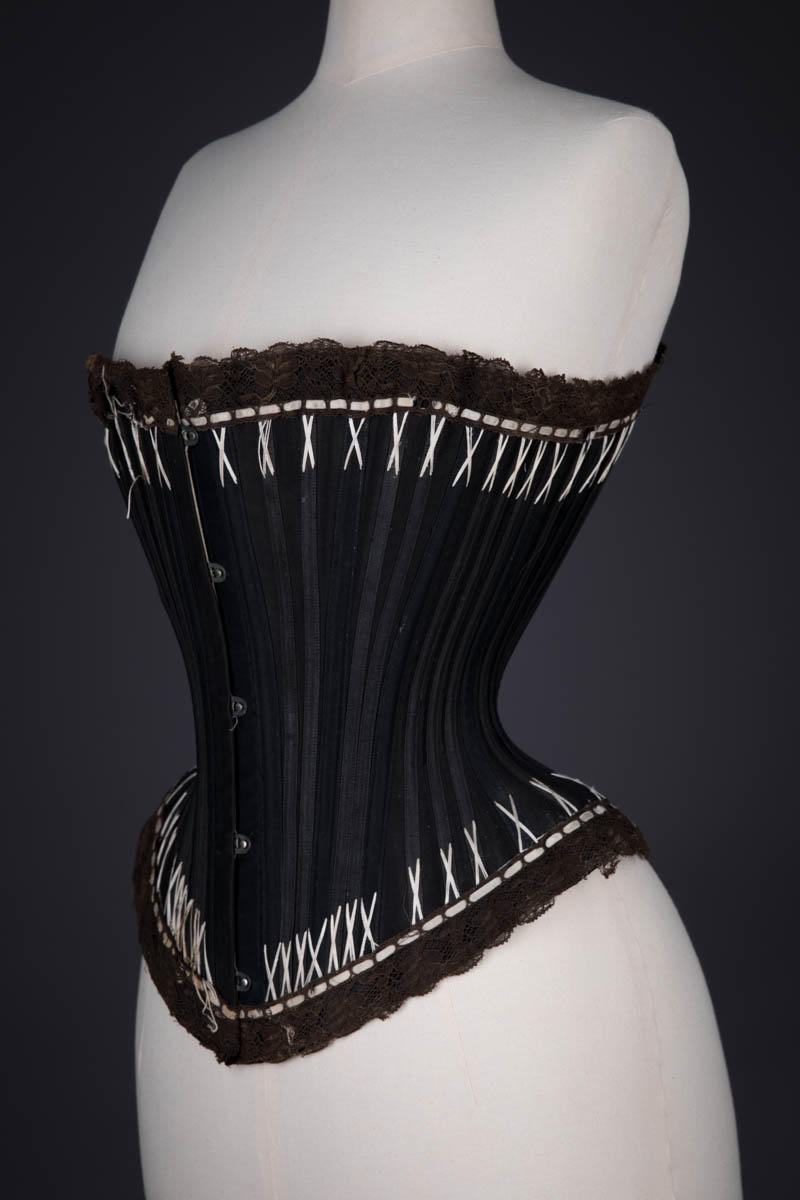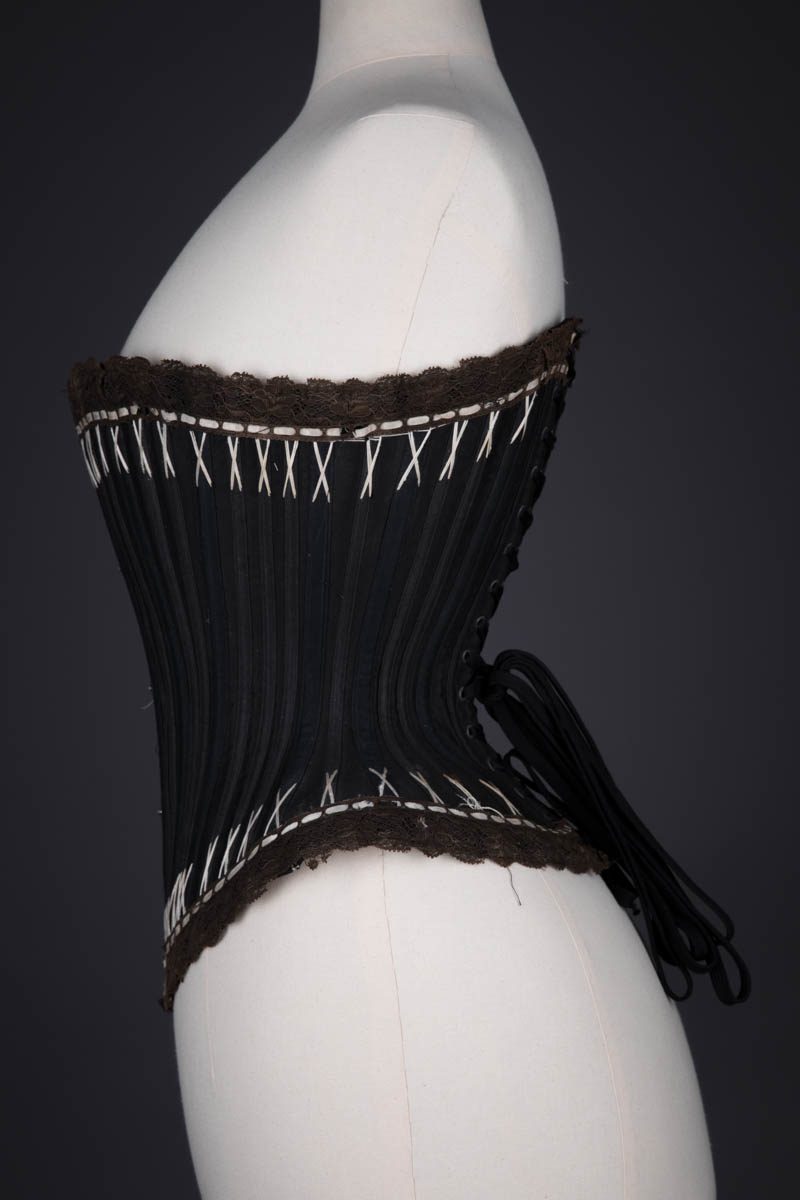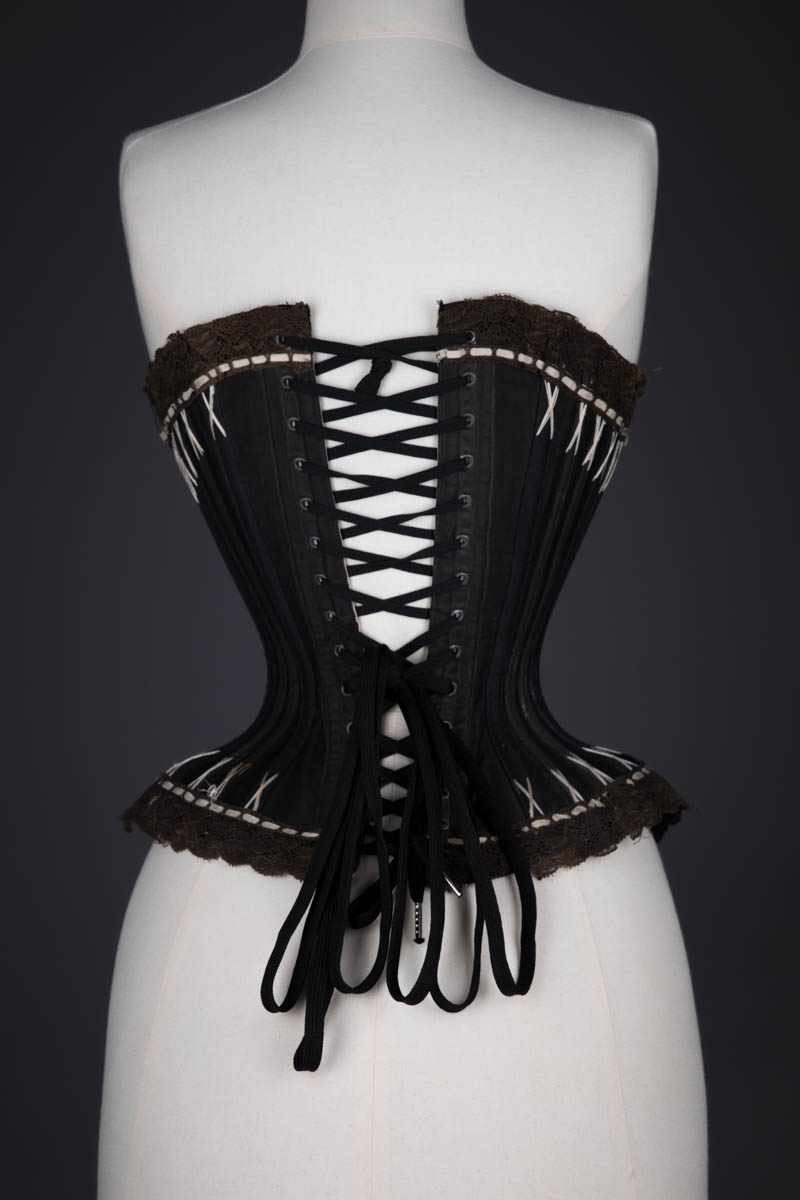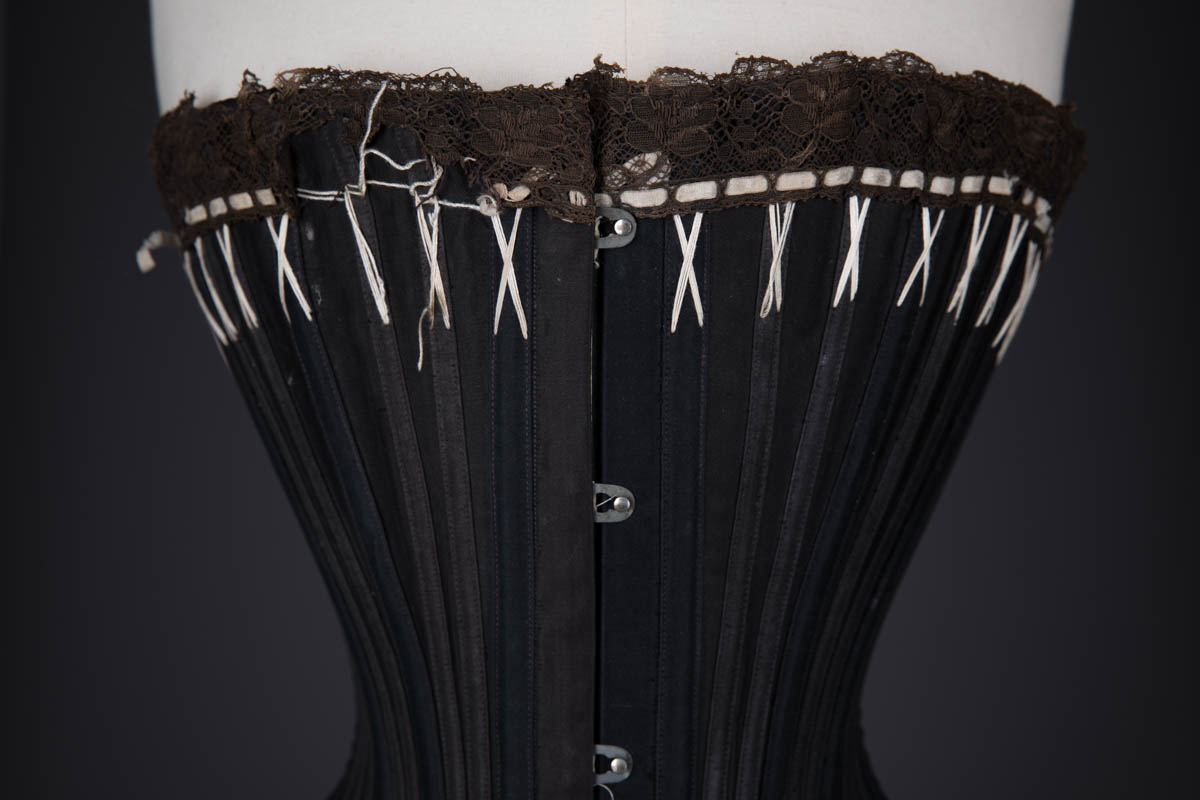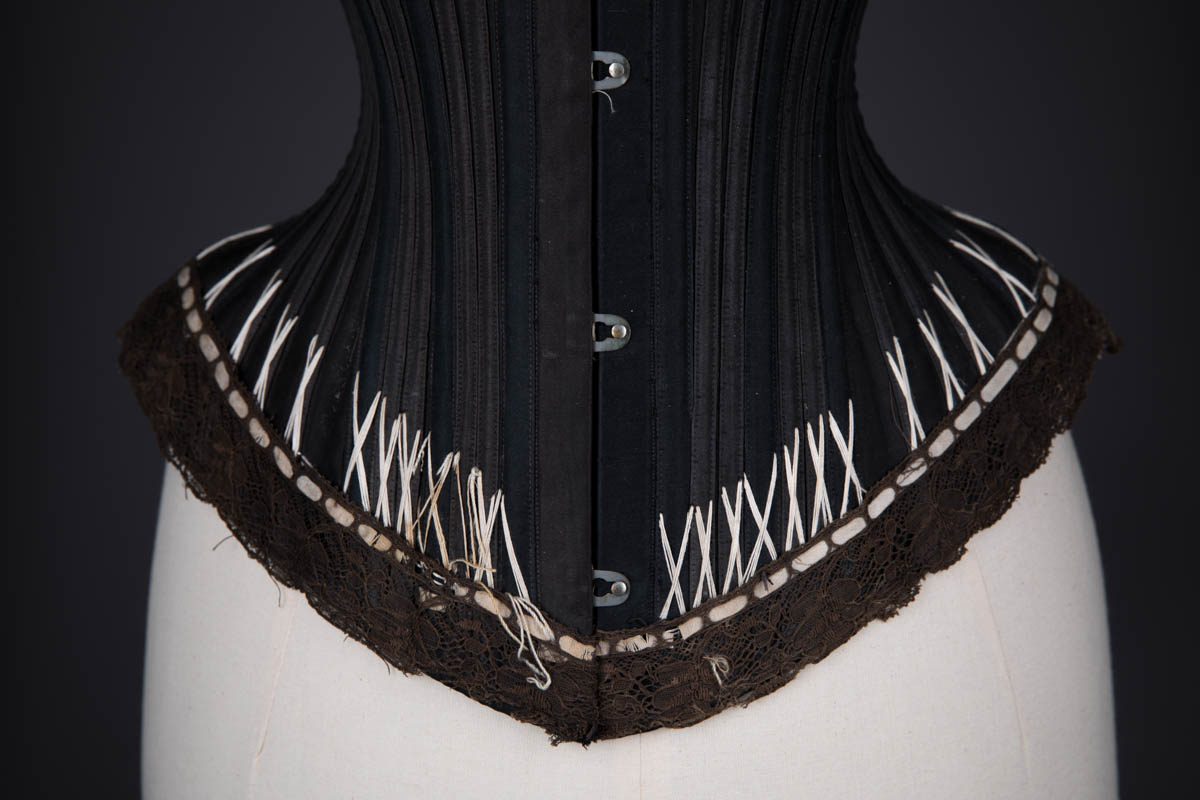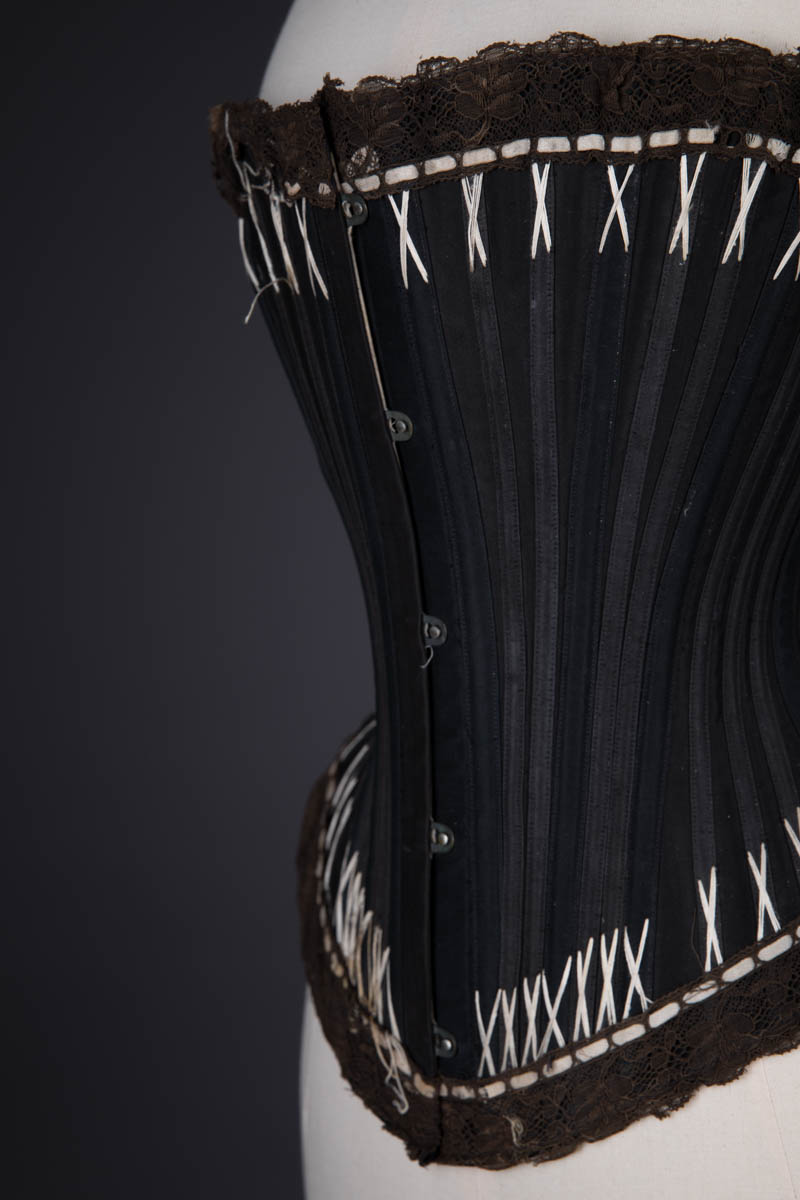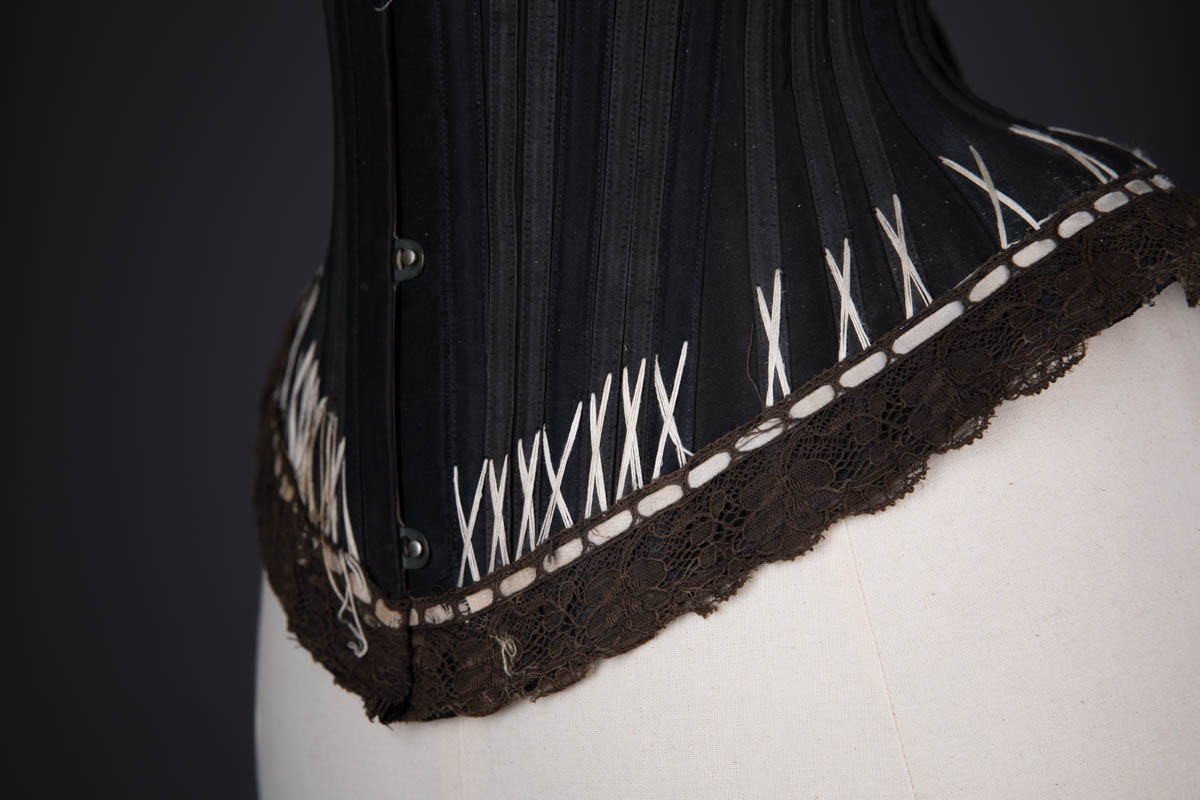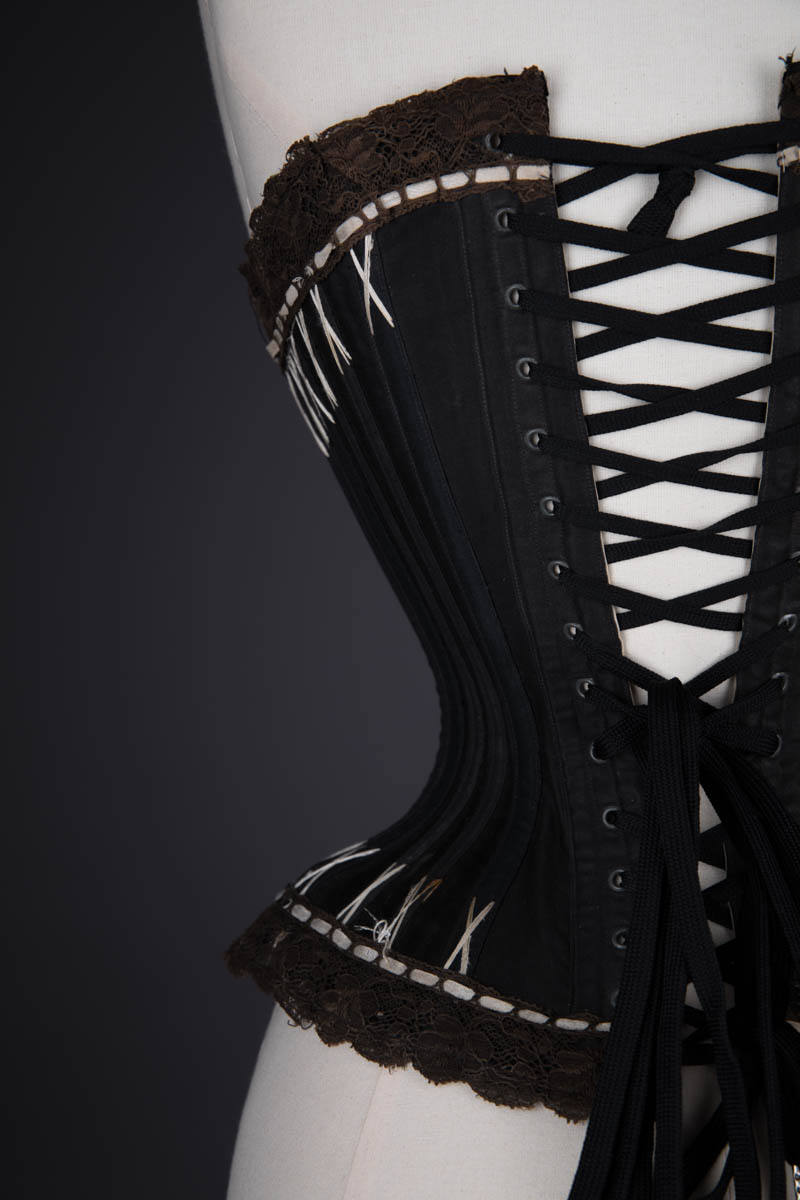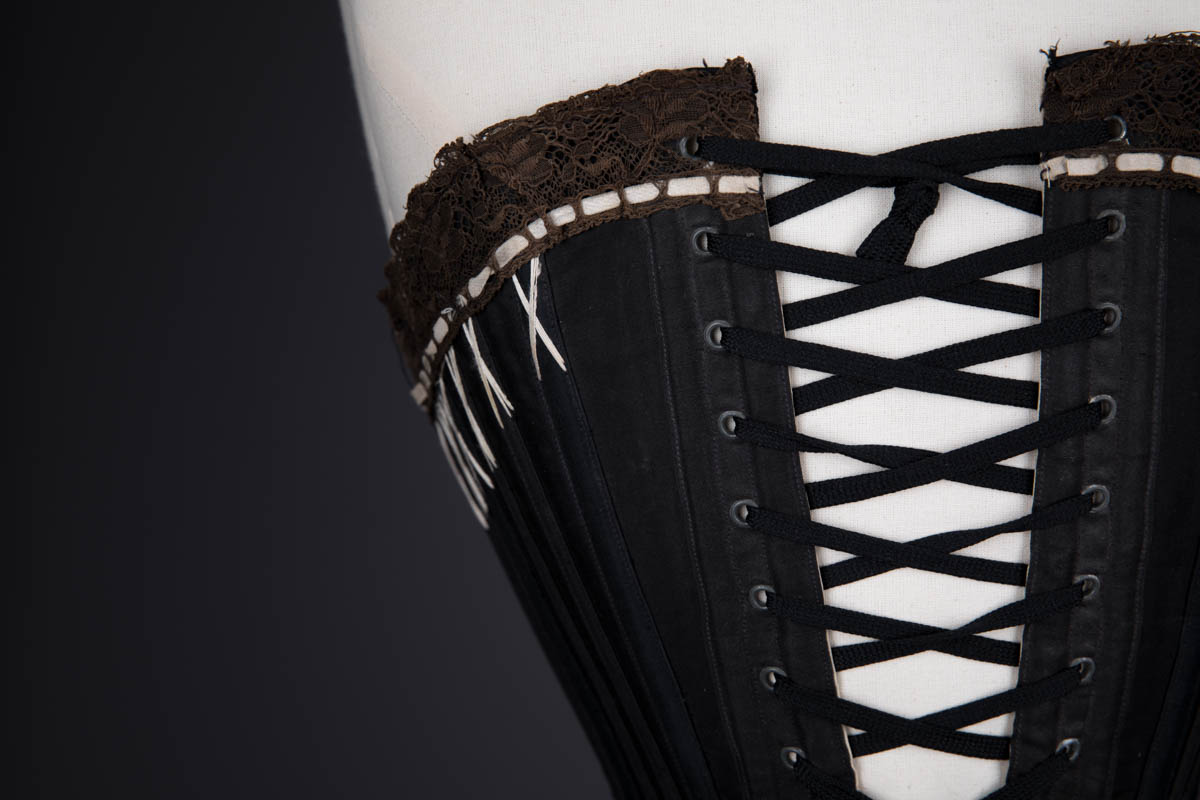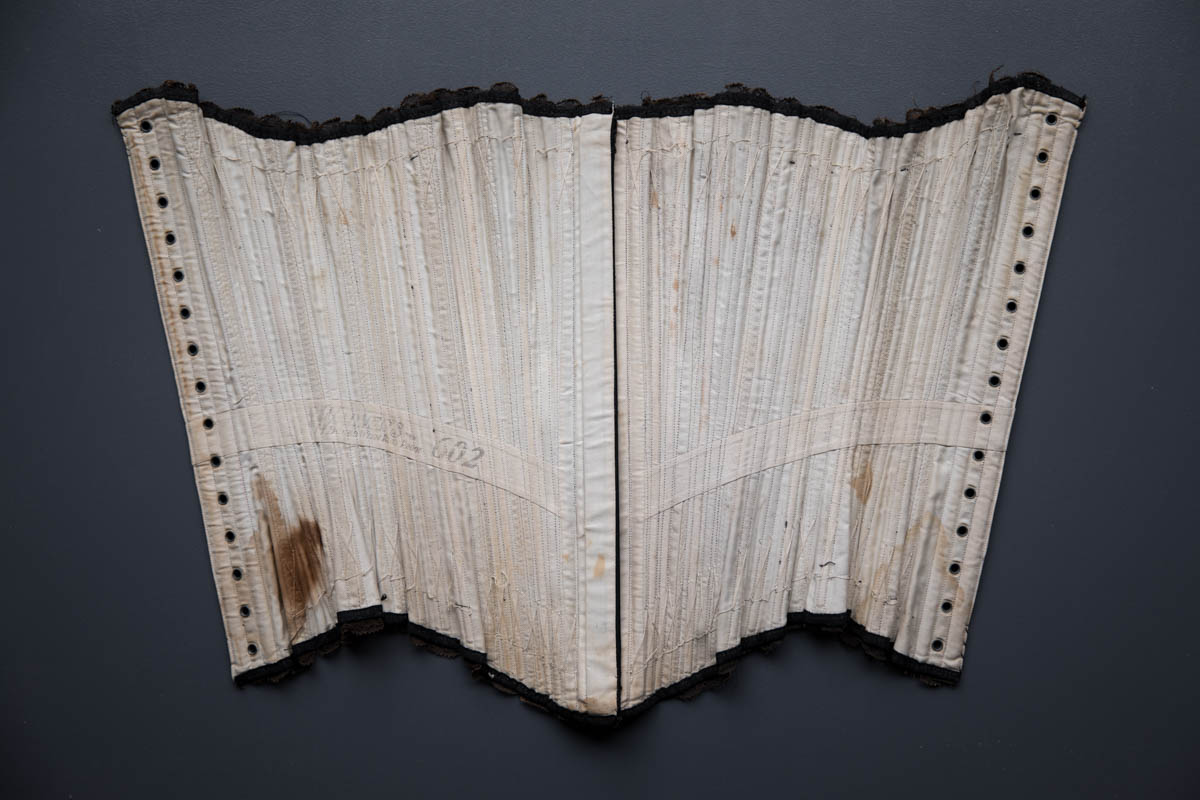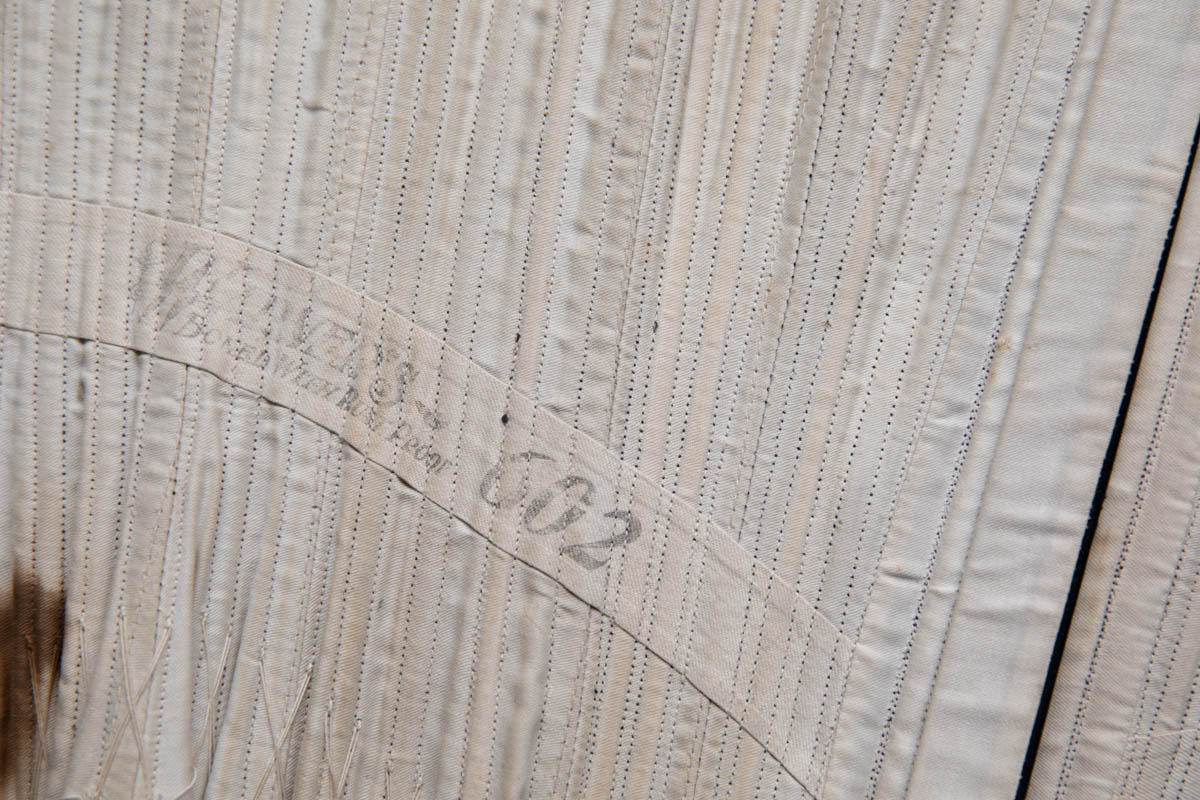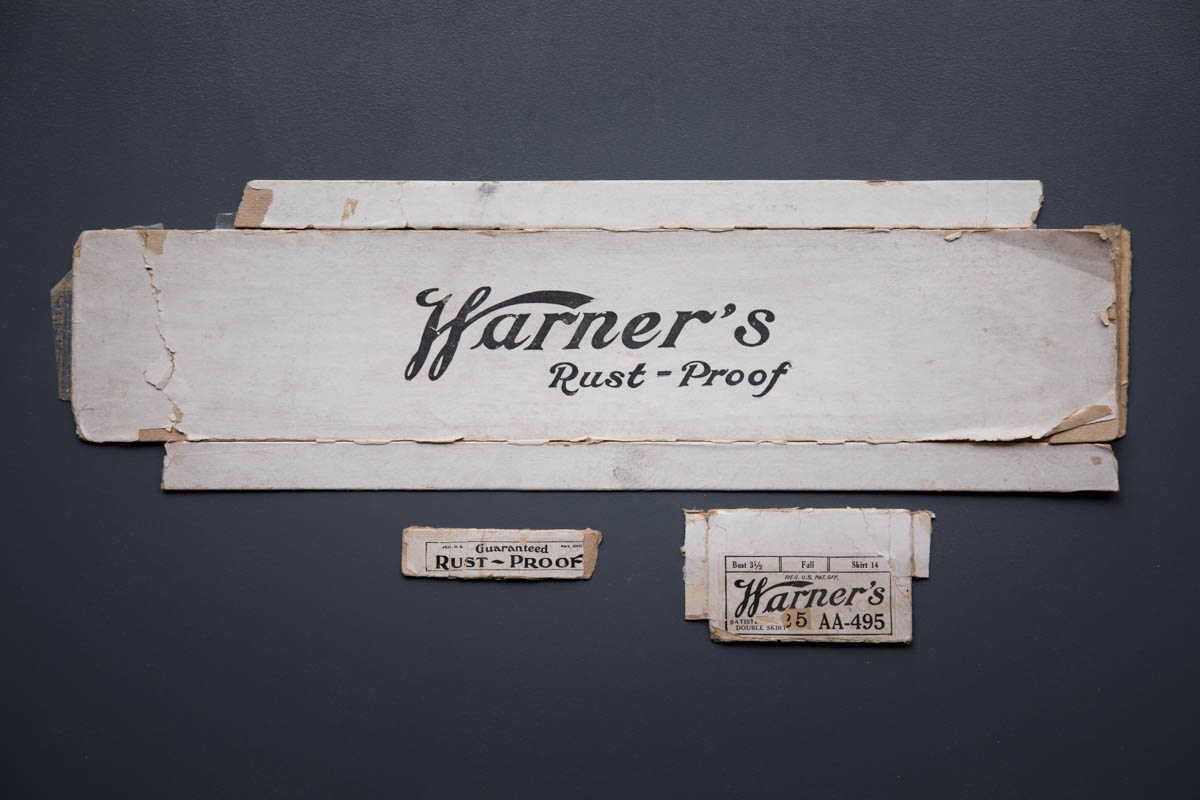Date: c. 1890s
Origin: United States
Fabric: Cotton sateen
Brand: Warner
A dramatically shaped corset, crafted from sturdy black cotton sateen, with a lighter unbleached cotton lining. It is heavily structured with coraline, a type of boning manufactured from the straight, stiff fibres of the Mexican ixtle plant, bound together by two strands of thread wrapped in opposite directions. There appear to be a number of steel bones in addition to the coraline, as evidenced by the rust marks on the garment interior.
During this time period, baleen was the typical material choice for corset boning. However, due to its popularity and overhunting of the baleen whale, it became increasingly expensive and difficult to acquire. Manufacturers began to experiment with other forms of boning. Coraline became a signature of the Warner brand, with other manufacturers also using feather quills, reeds and steel. Other factors that influenced the shift to non-baleen boning included the Dress Reform movement and the Industrial Revolution.
The interior of the corset shows a dramatically curved waist tape made of cotton twill, rising at the sides of the body and dipping to dramatic points at the centre. On one half of the corset, the tape is stamped with the Warner brand name, the phrase ‘boned with rust proof’, and the style number 602.
The corset is embellished with a ribbon slot lace trim at the bust and hip lines. The machine made lace now appears as brown due to age related discolouration, but would have originally appeared black. It is threaded with white silk ribbon. The many bone channels of the corset are embroidered with dramatic ‘X’ flossing motifs in contrast white thread. This style of embroidery is both decorative and functional, as it helped to secure bones within their channels and reduce wear and tear at garment stress points. The garment closes with a metal busk at the centre front, and with lacing through metal eyelets at the centre back.
The corset was machine stitched on a factory production line. It is an early example of mass manufactured fashion, and an early example of the burgeoning ready-to-wear fashion industry. The flossing embroidery appears to be hand stitched. Curiously this has been done with continuous lengths of thread that jumps between motifs without any trimming; presumably this was a time and cost saving measure.
The “Gay Nineties” were a period of change for women. During this decade women’s employment outside the home doubled and with new opportunities in education, work, and athletics came new styles of dress and an increase in mass production. This new style called the “New Woman” look featured shirtwaist blouses and long slender skirts; there is a general streamlining and menswear inspired look to outerwear as more women entered areas of public life that had mostly been dominated by men up until this point.
As outerwear became more streamlined to allow for ease of movement, the undergarments naturally changed with them. As one can see in the photos of this particular corset, it is quite evocative of an 1890s style, being much shorter than corsets in the previous decade. Corsets in this period were cut low on the bust and quite high on the hip to allow for freedom of movement.
In the late nineteenth century, New York physician Dr Lucien Warner gave up his practice to begin a new career lecturing on women’s health issues, including the effects of the corset. In 1873, he designed a corset that provided the desired fashionable shape along with increased flexibility. The following year, Lucien Warner and his brother founded Warner Brothers Corset Manufacturers. After buying Mary Phelps Jacob’s brassiere patent in 1915, Warner’s went on to introduce lettered cup sizing in the 1930s and released its first line of extremely successful ‘Merry Widow’ foundation garments in 1952.
From the collection of Karolina Laskowska. Many thanks to Ryann Farmer for the object research assistance and description.
